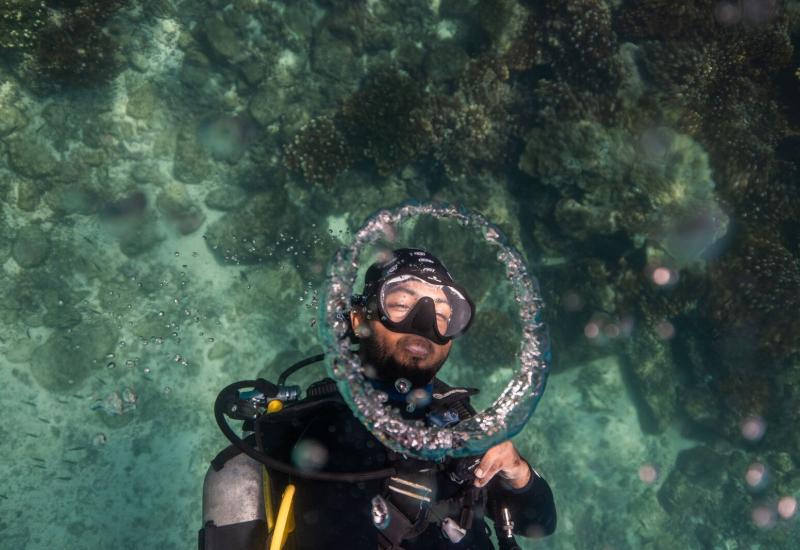ASK DAN: What Are Some Hazards Of Poor Buoyancy Control?

Courtesy of DANHazards of poor buoyancy control
A diver’s buoyancy is dynamic, constantly altered by pressure as the diver ascends and descends. Poor buoyancy control during descent can cause a diver to go deeper than originally planned, changing their planned safe-operating depth and no-decompression calculations as well as their planned air consumption. Uncontrolled ascents can have even greater consequences, resulting in serious injuries or fatality from decompression illness or barotrauma.
EAR AND SINUS INJURIES
Insufficient control of buoyancy can make equalization challenging and is therefore a common cause of the various ear- and sinus-related injuries that can occur while diving. During ascent, equalization of the ears and sinuses is typically passive. However, a reverse block can happen when a diver experiences congestion or uses decongestants improperly while diving. When a gas-filled space cannot vent during ascent, the trapped air and excess pressure cause pain. The only way to prevent this is to stop ascending, descend and manually equalize. Barotrauma can be avoided on descent by equalizing the ears and sinuses; if the ears or sinuses cannot be equalized, end the dive.
DECOMPRESSION SICKNESS
If a diver is unable to maintain buoyancy control and experiences significant or repetitive changes of depth throughout the course of a dive, the potential for bubble formation is increased, as is the likelihood of experiencing DCS. Exertion performed by a diver during descent and at depth will increase the amount of gas dissolved in tissue (decompression stress). Divers who lack sufficient buoyancy control tend to overexert themselves by moving up and down in the water column, constantly adjusting their buoyancy with overcorrections, and failing to become neutrally buoyant. These constant adjustments and increased fatigue due to excessive movement will increase the body’s blood circulation and carrying capacity of gas, and thus, decompression stress. Divers should seek to minimize the intensity of their exertion by practicing proper buoyancy control.
PULMONARY BAROTRAUMA
One of the most dangerous outcomes of ineffective buoyancy control is pulmonary barotrauma, a lung overexpansion injury. If a diver is unable to control their positive buoyancy and upward momentum in the water column they can suffer a rapid uncontrolled ascent and fail to properly exhale as the compressed gas in their lungs expands. As the gas expands it may rupture lung tissue while escaping into the body, where it can then manifest as free air in the chest cavity or adjoining tissue compartments. If the expanding gas is released into arterial circulation, it can cause the formation of bubbles that then become emboli, which restrict blood flow and may damage internal organs. If the escaped gas travels into the pulmonary veins, it can circulate to the brain and become lodged in small arteries. Known as a cerebral arterial gas embolism or CAGE, this is extremely dangerous to divers, potentially causing irreparable neurological damage or death. Like decompression sickness, pulmonary barotrauma can occur even when following planned dive profiles and safety measures. Once again, having poor buoyancy control only adds a complication to the inherent risks present in diving.
PREVENTIVE MEASURES
Hazards directly related to buoyancy control can largely be prevented by taking certain measures, including properly managing your gear. Every diver has the responsibility of selecting the amount of weight they need to maintain neutral buoyancy throughout the dive and must consider the material compositions of their gear and how they affect buoyancy. Divers must also recognize that buoyancy control is a skill that should be practiced, and they must put in the time and effort to master controlled ascents and descents in varying environments. Lastly, divers need to be able to achieve a stable, horizontal position in the water, also known as good trim. An upright profile in the water creates a natural momentum toward the surface, while a head-down position creates a natural downward trajectory. Maintaining an even and level positioning of the head and body promotes neutral buoyancy and effective control of your vertical movement in the water column.
For more information, visit dan.org










